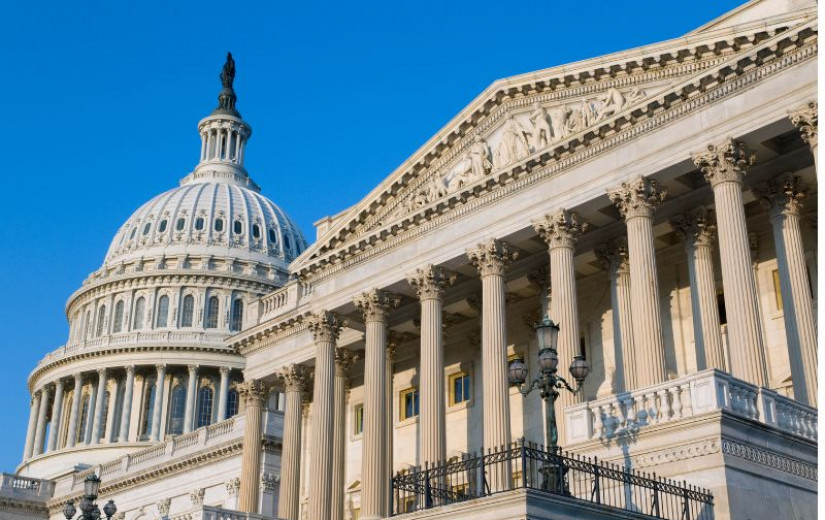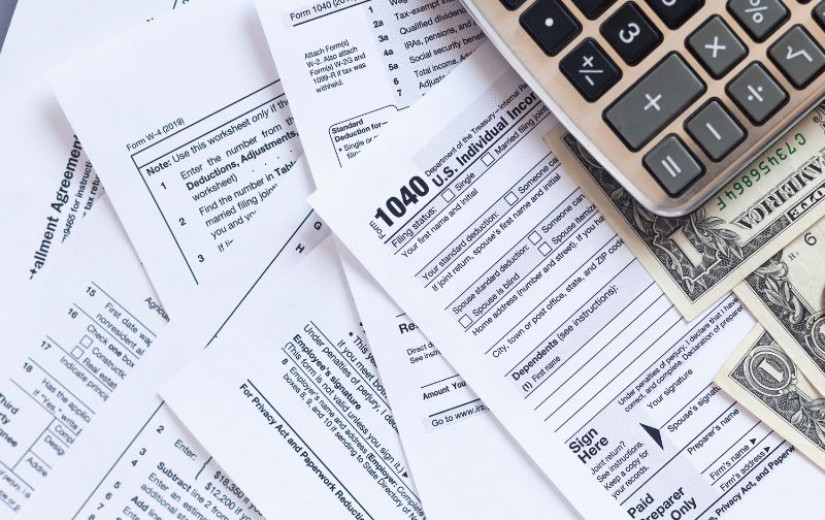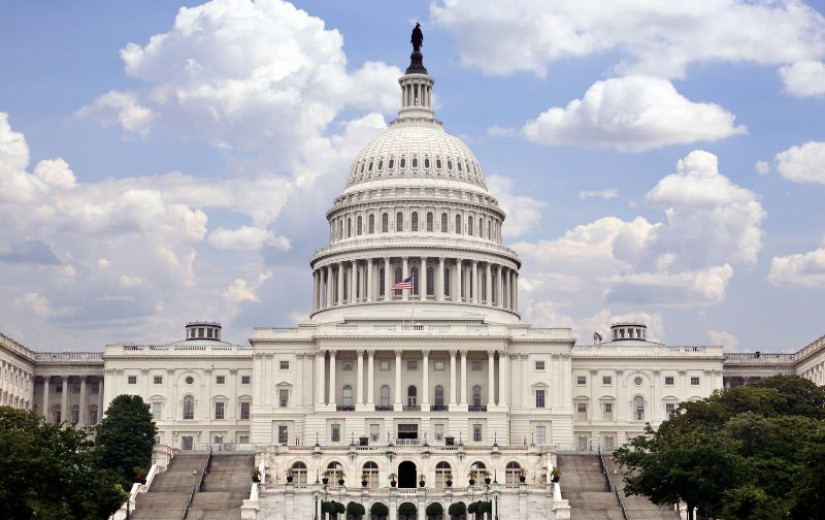
By Simon Watkins - May 01, 2025, 6:00 PM CDT
- The proposed U.S. ‘No Iranian Energy Act’ aims to end Iraq’s reliance on Iranian gas.
- Iraq has long been a conduit for sanction-evasion, using shared oil fields, false documentation, and covert transport methods to rebrand Iranian oil.
- The U.S. is now pursuing a more unified and sustained sanctions strategy.

Although the ‘No Iranian Energy Act’ was introduced to U.S. lawmakers on April Fools’ Day it is no joke as far as the Americans are concerned and the Iraqis will find little cause for merriment in its contents either. As highlighted by Chairman of the Republican Study Committee, Congressman August Pfluger, this legislation is part of President Donald Trump’s maximum pressure campaign against Iran’s leaders. “[These] are the world’s most dangerous state sponsors of terrorism, [and] the Iranian regime is not just a threat, its leaders are a genocidal death cult,” he said. The proposed Act will definitively sanction the importation of Iranian natural gas to Iraq, which has for many years formed the foundation of the country’s domestic power sector. Indeed, gas and electricity imports from Iran has historically comprised around 40% of all Iraq’s energy needs. An adjunct piece of legislation – the ‘Iran Waiver Rescissions Act’ -- would permanently freeze Iranian-sanctioned assets everywhere including Iraq and prohibit any standing or future U.S. President from using any waiver authority to lift the sanctions.
The only surprise in any of this to dedicated Middle East watchers is that such decisive action was so long in coming. The onset of the Iraq’s perennial game of lying to the U.S. about its intentions over Iran in exchange for money had become as familiar a seasonal landmark for OilPrice.com as the first cuckoo of spring. The game itself would begin with whoever was Iraq president at the time flying off to Washington at some point in early August to meet with his U.S. counterpart whereupon he would tell the Americans that Iraq was done with relying on Iran for its domestic power needs and would begin the process of tapering down this dependence as soon as possible. In order to do this Iraq would need a little time, so another waiver to keep importing these things from Iran would be required, and also it would need some interim funding to put itself in a better financial position to deal with the fallout from this process. Once the billions of dollars subsequently handed over to Iraq from the U.S. had been moved by Iraq to somewhere in Northern Cyprus that no one could touch them, then Baghdad would sign another long-term deal with Iran to keep importing its gas and electricity in the same amounts as it has always done.
Related: OPEC Plot Twist? Bloomberg Survey Shows Production Drop in April
The problem here was that the more this game persisted, the less fun it was for many in various U.S. administrations. Evidence of how unfunny this had become to some close to the action was seen from the then-State Department spokesperson Morgan Ortagus following the signing in mid-2020 of a two-year contract for Iraq to keep taking Iranian gas and electricity (the longest period ever at that point). Ortagus furiously rattled of swingeing new sanctions on 20 Iran- and Iraq-based entities, citing them as being instruments in the funnelling of money to Iran’s Islamic Revolutionary Guards Corps’ (IRGC) elite Quds Force, which was absolutely true. She added that the 20 entities were continuing to exploit Iraq’s dependence on Iran as an electricity and gas source by smuggling Iranian petroleum through the Iraqi port of Umm Qasr and money laundering through Iraqi front companies, which was also true. And she added that Washington was extremely concerned that Iraq was continuing to act as a conduit for Iranian oil and gas supplies to make their way out into the world’s major export markets. This was entirely correct as well, had been going on for years, and was indeed the key reason why Iran was still able to function effectively as an economy and a global threat of terror despite sanctions of varying severity being placed upon it since the Islamic Revolution of 1979.
It was a couple of things in particular about Iraq that Iran found invaluable in this context and still does. The first was that the shared oil reservoirs straddling Iraq and Iraq have always made it impossible to determine from which side non-sanctioned ‘Iraqi oil’ was actually taken, as analysed in full in my latest book on the new global oil market order. Even if the Americans or their trusted appointees stationed people at every single rig in every single shared field in Iraq they would not be able to tell if the oil coming out it was from the Iraq side or the Iranian side. Notable examples of shared reservoirs and fields are Iran’s Azadegan oil reservoir (split into North and South fields) that is exactly the same reservoir upon which sits Iraq’s Majnoon oilfield. The same feature applies to Azar (on the Iran side)/Badra (on the Iraq side), Yadavaran (Iran)/Sinbad (Iraq), Naft Shahr (Iran)/Naft Khana (Iraq), Dehloran (Iran)/Abu Ghurab (Iraq), West Paydar (Iran)/Fakka/Fauqa (Iraq), and Arvand (Iran)/South Abu Ghurab (Iraq). The second factor was that with oil from even non-shared fields, barrels drilled from sanctioned Iranian wells could simply be relabelled as non-sanctioned Iraqi oil and then forwarded on that basis. The geographical location of Iraq makes it an ideal hub for transport of oil by road into Europe via Turkey, or to the Mediterranean Sea. Or the Iranian oil rebranded as Iraqi could be driven to ports for onward loading to ships and then moved anywhere that way.
Once at the ports and ready for loading onto tankers, the documentation on the country of origin of the oil is easily changed to show that it comes from Iraq and not Iran. Iran’s own former Petroleum Minister, Bijan Zanganeh, publicly highlighted this very practice when he said in 2020: “What we export is not under Iran’s name -- the documents are changed over and over, as well as [the] specifications.” Once onboard the tankers, the obfuscation of the true source of the oil could continue, with another reliable sanctions side-stepping technique being the disabling of the ‘automatic identification system’ on ships that carry Iranian oil. This makes tracking such vessels much more difficult. Compounding this – particularly useful for oil being moved to China -- is the common practice of at-sea or just-outside-port transfers of Iranian oil onto tankers flying the flags of a local Asian country, with Malaysia and Indonesia having long been favoured by Iran and Iraq in this regard, as also detailed in my latest book. So well-developed and effective did these methods become that they were a matter of great national pride for Iran, with its then-Foreign Minister, Mohammad Zarif, stating in December 2018 at the Doha Forum that: “If there is an art that we have perfected in Iran, [that] we can teach to others for a price, it is the art of evading sanctions.”
As much of this ‘art’ involved Iran using Iraq as its cover, the U.S.’s new legislation is likely to mark a turning point in Washington’s and the West’s bid to re-assert influence in the heart of the Middle East at the expense of China. Earlier sanctions, when applied to Iraq, saw little slowing down in the rate at which Beijing was able to increase its hold over the country’s vast oil resources. New exploration and development deals, plus many smaller ‘contract-only’ awards connected to other major fields, have continued apace, to the degree that over a third of all Iraq’s proven oil and gas reserves and over two-thirds of its current production are managed by Chinese companies, according to industry figures. More specifically, Chinese firms combined have direct shares in around 24 billion barrels of reserves and are responsible for the production of around 3.0 million bpd. However, such sanctions as were brought against Baghdad were fragmented and occasional, rather than coherent and sustained as the current plans portend. Moreover, recent months have seen advances by the U.S. and its allies in securing major new deals in Iraq, with TotalEnergies’ US$27 billion four-pronged deal being one case in point and BP’s US$25 billion oil field deals in the north being another. Tellingly, perhaps, it is to the U.S.’s Schlumberger that Iraq has now turned to advance the long-stalled development of Iraq’s strategically critical Akkas gas field. Discovered in 1992, it contains around 5.6 trillion cubic feet of natural gas deposits and is the country’s largest natural gas site. However, its true value is in being part is one of three big gas fields that form a skewed triangle across southern Iraq, stretching from the Mansuriya field near the eastern border with Iran, down to Siba field in the south (extremely close to the key Iraqi Basra export hub), and then all the way west across to Akkas itself (extremely close to the border with Syria).
By Simon Watkins for Oilprice.com
More Top Reads From Oilprice.com

Simon Watkins
Simon Watkins is a former senior FX trader and salesman, financial journalist, and best-selling author. He was Head of Forex Institutional Sales and Trading for…












